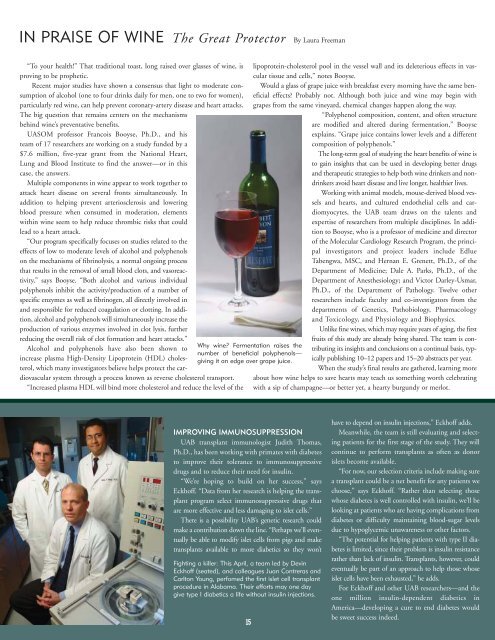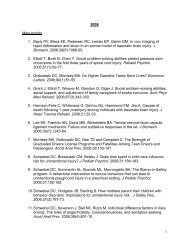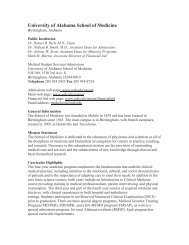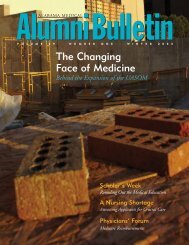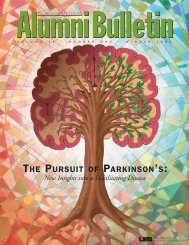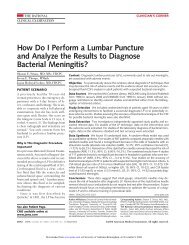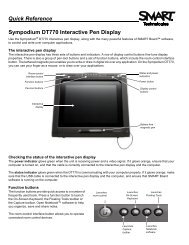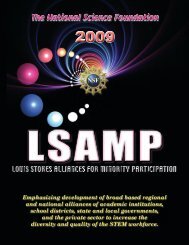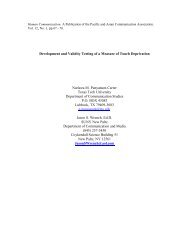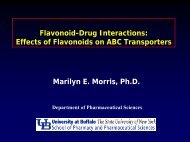uasom doctors uasom doctors - University of Alabama at Birmingham
uasom doctors uasom doctors - University of Alabama at Birmingham
uasom doctors uasom doctors - University of Alabama at Birmingham
Create successful ePaper yourself
Turn your PDF publications into a flip-book with our unique Google optimized e-Paper software.
IN PRAISE OF WINE The Gre<strong>at</strong> Protector By Laura Freeman<br />
“To your health!” Th<strong>at</strong> traditional toast, long raised over glasses <strong>of</strong> wine, is<br />
proving to be prophetic.<br />
Recent major studies have shown a consensus th<strong>at</strong> light to moder<strong>at</strong>e consumption<br />
<strong>of</strong> alcohol (one to four drinks daily for men, one to two for women),<br />
particularly red wine, can help prevent coronary-artery disease and heart <strong>at</strong>tacks.<br />
The big question th<strong>at</strong> remains centers on the mechanisms<br />
behind wine’s prevent<strong>at</strong>ive benefits.<br />
UASOM pr<strong>of</strong>essor Francois Booyse, Ph.D., and his<br />
team <strong>of</strong> 17 researchers are working on a study funded by a<br />
$7.6 million, five-year grant from the N<strong>at</strong>ional Heart,<br />
Lung and Blood Institute to find the answer—or in this<br />
case, the answers.<br />
Multiple components in wine appear to work together to<br />
<strong>at</strong>tack heart disease on several fronts simultaneously. In<br />
addition to helping prevent arteriosclerosis and lowering<br />
blood pressure when consumed in moder<strong>at</strong>ion, elements<br />
within wine seem to help reduce thrombic risks th<strong>at</strong> could<br />
lead to a heart <strong>at</strong>tack.<br />
“Our program specifically focuses on studies rel<strong>at</strong>ed to the<br />
effects <strong>of</strong> low to moder<strong>at</strong>e levels <strong>of</strong> alcohol and polyphenols<br />
on the mechanisms <strong>of</strong> fibrinolysis, a normal ongoing process<br />
th<strong>at</strong> results in the removal <strong>of</strong> small blood clots, and vasoreactivity,”<br />
says Booyse. “Both alcohol and various individual<br />
polyphenols inhibit the activity/production <strong>of</strong> a number <strong>of</strong><br />
specific enzymes as well as fibrinogen, all directly involved in<br />
and responsible for reduced coagul<strong>at</strong>ion or clotting. In addition,<br />
alcohol and polyphenols will simultaneously increase the<br />
production <strong>of</strong> various enzymes involved in clot lysis, further<br />
reducing the overall risk <strong>of</strong> clot form<strong>at</strong>ion and heart <strong>at</strong>tacks.”<br />
Alcohol and polyphenols have also been shown to<br />
increase plasma High-Density Lipoprotein (HDL) cholesterol,<br />
which many investig<strong>at</strong>ors believe helps protect the cardiovascular<br />
system through a process known as reverse cholesterol transport.<br />
“Increased plasma HDL will bind more cholesterol and reduce the level <strong>of</strong> the<br />
Why wine? Ferment<strong>at</strong>ion raises the<br />
number <strong>of</strong> beneficial polyphenols—<br />
giving it an edge over grape juice.<br />
lipoprotein-cholesterol pool in the vessel wall and its deleterious effects in vascular<br />
tissue and cells,” notes Booyse.<br />
Would a glass <strong>of</strong> grape juice with breakfast every morning have the same beneficial<br />
effects? Probably not. Although both juice and wine may begin with<br />
grapes from the same vineyard, chemical changes happen along the way.<br />
“Polyphenol composition, content, and <strong>of</strong>ten structure<br />
are modified and altered during ferment<strong>at</strong>ion,” Booyse<br />
explains. “Grape juice contains lower levels and a different<br />
composition <strong>of</strong> polyphenols.”<br />
The long-term goal <strong>of</strong> studying the heart benefits <strong>of</strong> wine is<br />
to gain insights th<strong>at</strong> can be used in developing better drugs<br />
and therapeutic str<strong>at</strong>egies to help both wine drinkers and nondrinkers<br />
avoid heart disease and live longer, healthier lives.<br />
Working with animal models, mouse-derived blood vessels<br />
and hearts, and cultured endothelial cells and cardiomyocytes,<br />
the UAB team draws on the talents and<br />
expertise <strong>of</strong> researchers from multiple disciplines. In addition<br />
to Booyse, who is a pr<strong>of</strong>essor <strong>of</strong> medicine and director<br />
<strong>of</strong> the Molecular Cardiology Research Program, the principal<br />
investig<strong>at</strong>ors and project leaders include Edlue<br />
Tabengwa, MSC, and Hernan E. Grenett, Ph.D., <strong>of</strong> the<br />
Department <strong>of</strong> Medicine; Dale A. Parks, Ph.D., <strong>of</strong> the<br />
Department <strong>of</strong> Anesthesiology; and Victor Darley-Usmar,<br />
Ph.D., <strong>of</strong> the Department <strong>of</strong> P<strong>at</strong>hology. Twelve other<br />
researchers include faculty and co-investig<strong>at</strong>ors from the<br />
departments <strong>of</strong> Genetics, P<strong>at</strong>hobiology, Pharmacology<br />
and Toxicology, and Physiology and Biophysics.<br />
Unlike fine wines, which may require years <strong>of</strong> aging, the first<br />
fruits <strong>of</strong> this study are already being shared. The team is contributing<br />
its insights and conclusions on a continual basis, typically<br />
publishing 10–12 papers and 15–20 abstracts per year.<br />
When the study’s final results are g<strong>at</strong>hered, learning more<br />
about how wine helps to save hearts may teach us something worth celebr<strong>at</strong>ing<br />
with a sip <strong>of</strong> champagne—or better yet, a hearty burgundy or merlot.<br />
IMPROVING IMMUNOSUPPRESSION<br />
UAB transplant immunologist Judith Thomas,<br />
Ph.D., has been working with prim<strong>at</strong>es with diabetes<br />
to improve their tolerance to immunosuppressive<br />
drugs and to reduce their need for insulin.<br />
“We’re hoping to build on her success,” says<br />
Eckh<strong>of</strong>f. “D<strong>at</strong>a from her research is helping the transplant<br />
program select immunosuppressive drugs th<strong>at</strong><br />
are more effective and less damaging to islet cells.”<br />
There is a possibility UAB’s genetic research could<br />
make a contribution down the line. “Perhaps we’ll eventually<br />
be able to modify islet cells from pigs and make<br />
transplants available to more diabetics so they won’t<br />
Fighting a killer: This April, a team led by Devin<br />
Eckh<strong>of</strong>f (se<strong>at</strong>ed), and colleagues Juan Contreras and<br />
Carlton Young, perfomed the first islet cell transplant<br />
procedure in <strong>Alabama</strong>. Their efforts may one day<br />
give type I diabetics a life without insulin injections.<br />
15<br />
have to depend on insulin injections,” Eckh<strong>of</strong>f adds.<br />
Meanwhile, the team is still evalu<strong>at</strong>ing and selecting<br />
p<strong>at</strong>ients for the first stage <strong>of</strong> the study. They will<br />
continue to perform transplants as <strong>of</strong>ten as donor<br />
islets become available.<br />
“For now, our selection criteria include making sure<br />
a transplant could be a net benefit for any p<strong>at</strong>ients we<br />
choose,” says Eckh<strong>of</strong>f. “R<strong>at</strong>her than selecting those<br />
whose diabetes is well controlled with insulin, we’ll be<br />
looking <strong>at</strong> p<strong>at</strong>ients who are having complic<strong>at</strong>ions from<br />
diabetes or difficulty maintaining blood-sugar levels<br />
due to hypoglycemic unawareness or other factors.<br />
“The potential for helping p<strong>at</strong>ients with type II diabetes<br />
is limited, since their problem is insulin resistance<br />
r<strong>at</strong>her than lack <strong>of</strong> insulin. Transplants, however, could<br />
eventually be part <strong>of</strong> an approach to help those whose<br />
islet cells have been exhausted,” he adds.<br />
For Eckh<strong>of</strong>f and other UAB researchers—and the<br />
one million insulin-dependent diabetics in<br />
America—developing a cure to end diabetes would<br />
be sweet success indeed.


